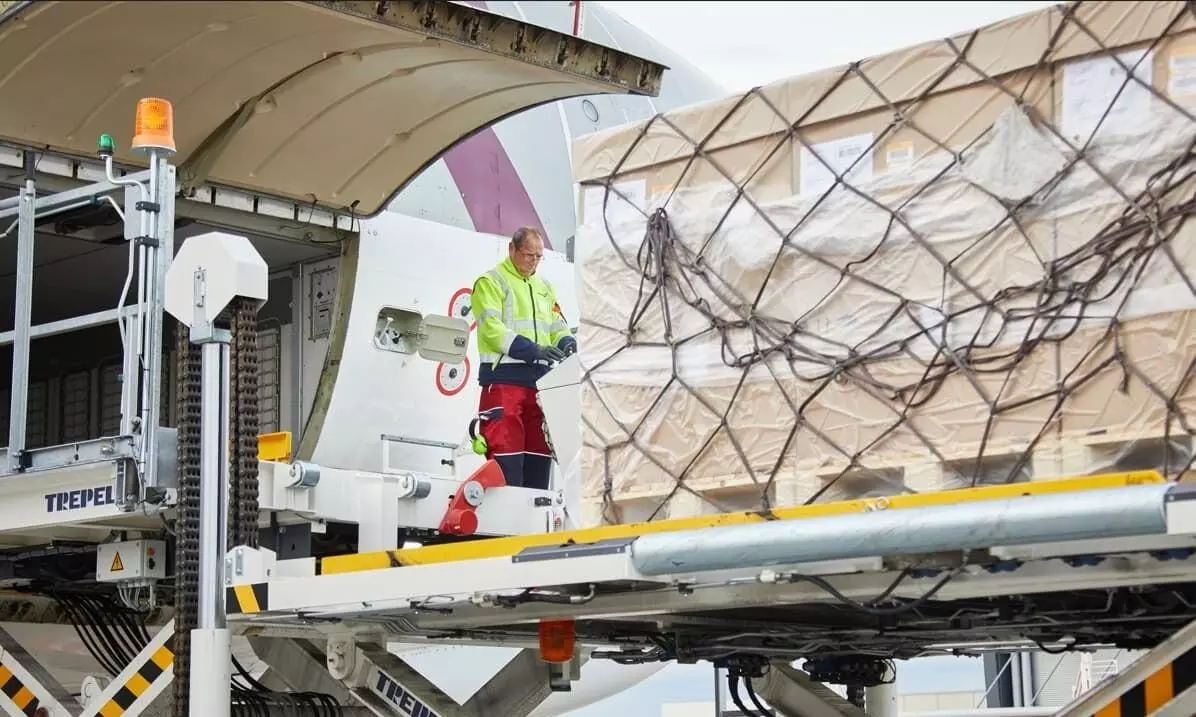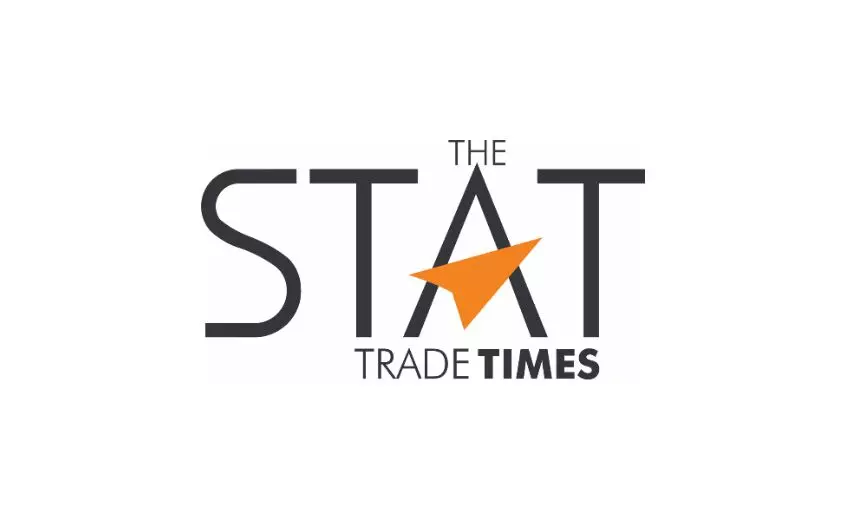
Despite slowing trend into Q4, 2025 'not as bad as feared'
September’s global air cargo market data showed signs of growth slowing heading into the final quarter of the year, according to industry analysts Xeneta.

Global air cargo demand growth slowed to +3% year-on-year, in line with capacity growth, in September, at what would traditionally be seen as the commencement of the peak season.
This follows a consecutive +5% year-on-year increase in July and August 2025. Month-on-month volumes also saw a lower +3% rise.
“Over the previous two months, we’ve seen how air cargo has gained from ‘piggybacking’ on global uncertainty, whether that’s frontloading supply chains or modal shift from ocean to air to move goods more quickly before tariffs took hold,” said Xeneta’s Chief Airfreight Officer, Niall van de Wouw.
“September’s data is an early indication that this is lessening as some stability starts to return on major corridors and everything is less hectic on a global level.”
The slowdown of volume growth also continued to squeeze yields. Air cargo spot rates registered a fifth consecutive month of year-on-year declines in September, falling by -4% to a global average of $2.54 per kg.
van de Wouw, in a webinar held after the release of the report, said, “In September, air freight rates fell 4% year-on-year in US dollar terms. But if you account for local currency devaluation, the effective decline is closer to 10%, a very significant drop.”
TIACA’s Director General Glyn Hughes, who also spoke during the webinar, noted that demand has held up surprisingly well.
“While we saw significant front-loading in May, the same pattern didn’t appear in July and August. After 24 months of consecutive expansion, we’re now comparing against very strong numbers from last year,” he said.
He also added, “Spot rates appear to be settling into equilibrium, reflecting consistent demand and capacity.”
However, van de Wouw differed, saying that “I don’t think many supply chain managers would describe the current situation as stable. On a global level, there is some stability, but at the level of individual trade lanes, it’s a different story. Demand and rates fluctuate, though arguably with less downward pressure than before, but we shouldn’t assume that the global picture translates uniformly to each market.”
Much of the downward pressure came from muted activity on Transatlantic and Transpacific routes, where repeated extensions of US tariff deadlines appear to have pulled forward volumes into the summer months.
The US administration’s decision to remove the de minimis threshold for low-value cross-border shipments caused Chinese e-commerce exports to the US to fall for a fourth consecutive month in August. Sales of low-value and e-commerce goods slumped -38% year-on-year, according to the latest China Customs data.
Burgeoning e-commerce volumes, a result of the Chinese e-commerce behemoths shifting their focus towards European consumers, helped to push volumes +4% higher on the Asia–Europe corridor in the first three weeks of September compared to the previous month.
China Customs reported year-to-date cross-border e-commerce and low-value goods sales to Europe increased +58% year-on-year, with August alone up +55%.
Van de Wouw says it is ‘astonishing’ how quickly China’s big e-commerce players have been able to pivot towards Europe to boost their growth since the US’ decision on de minimis.
He informed that he doubted consumers would shift so easily. “Heavy marketing spend redirected demand. Companies like Temu shifted billions in ad spend from the US to Europe.”
Hughes pointed out that the shift is driven by social media marketing, not traditional ads. Budgets and capacity moved almost simultaneously. He also noted that the air cargo industry responded well to these demand shifts much more quickly by reallocating capacity.
“Over the last few years, we’ve heard a lot about ‘China +1’ from a production perspective, aimed at diversifying supply chain risks. Now, we’re hearing more about ‘USA +1’ from a consumption perspective.”
Pointing out the higher demand on routes like Asia to Europe, he said that this is a strong illustration of what we can expect over the next two to three years: “a greater diversification of air cargo trade lanes.”
Demand was also supported by the pre–Golden Week cargo rush as well as mode shift due to the suspension of China–Europe rail links at the Polish border.
In terms of the latest 100% pharmaceutical tariffs imposed by the US government, effective from 1 October, the impact will likely be more measured due to earlier negotiated agreements with the EU and Japan. The UK also negotiated a trade agreement with the US, but the tariff rate for pharmaceuticals remains pending.
Additionally, the US focus on branded or patented products shields most of India’s pharma exports, which fall under low-cost generic medicines.
For Xeneta’s Lead Airfreight Development & Analyses, Wenwen Zhang, there’s one corridor that really deserves attention: India outbound to North America.
“Compared to the same period last year, we still see a significant impact from the Red Sea situation, which caused many shippers to shift volumes to air freight. Even a year later, the Red Sea crisis continues. But, with the U.S. imposing a 50% tariff on India-bound exports, this corridor is seeing less demand.”
Van de Wouw explains, “Just take a step back and put the numbers aside. Imagine you’re an operator in the Indian market serving the U.S. A year ago, because of the Red Sea situation, rates and volumes were through the roof. One year later, new regulations and import tariffs cause the market to tank.”
“Navigating such an environment is feast or famine, which must be incredibly difficult, especially for operators with high fixed costs. You have no control, it gives and it takes, creating a lot of instability in this part of the world when serving the U.S. market,” he added.
Even so, the overall Asia-Europe growth in September compared to August remains well below last year’s +9% surge. Super Typhoon Ragasa added to the gloom. The storm disrupted East Asian hubs in the final week of September, leaving monthly volumes up by only +3% on August.
At the corridor level, the US tariffs have created profound impacts on seasonal air cargo flows.
Across both the Transpacific and Transatlantic markets, the average air cargo spot rates slipped by -2-3% in September compared to a month ago.
Even as supply chains shift towards the Southeast Asia market for production to lessen the impact of tariffs, September’s Southeast Asia to the US spot rates failed to grow, declining -2% month-on-month and a striking -22% compared to a year ago.
The reduction of e-commerce volumes due to the US global de minimis bans left a gaping hole in the Transpacific market, marked by carriers’ agility in shifting freighter capacity away from the region.
Reflecting the general slowdown in growth, Europe to the US air cargo markets also saw lower volumes as the earlier frontloading due to extended US tariff deadlines disrupted traditional seasonal flows.
On a more positive note, September air cargo spot rates on the westbound and eastbound legs remained higher than a year earlier.
About a 20% reduction in Transatlantic capacity in late October at the start of airlines’ winter schedules, when passenger belly capacity is taken out after the summer months, is expected to reverse freight rate declines, but is, van de Wouw says, “a consequence of supply, not demand”.
Asia-to-Europe trade lanes offered a little more cheer as September spot rates from Northeast and Southeast Asia to Europe edged up by +4% month-on-month, supported by the run-up to the peak shipping season. Compared with a year ago, however, they were down -5% and -21% respectively.
The level of rate fluctuation is creating a “wary mood” for contract negotiations between shippers and freight forwarders. The share of six-month deals rose by nearly ten percentage points year-on-year to 22% in the third quarter, timed to expire just after the peak season and ahead of the next annual cycle. By contrast, the share of contracts lasting more than a year has fallen, reflecting doubts about the longer-term outlook.
“There is such limited bandwidth for shippers. They are looking for stability at a reasonable, competitive rate, and want to go long on contract negotiations, preferably, because it’s such a painful process for them trying to plan on a quarter-by-quarter basis,” van de Wouw added.
Looking at the outlook for Q4, van de Wouw said: “When we reported better-than-expected demand in July and August, our question was ‘how long will it last?’. In September, we started to see the market growth slowing, and we expect this to continue for the rest of the year.”
Based on current market fundamentals, he now expects 2025 to end with a +3-4% growth in air cargo demand.
“Q4 for airlines and freight forwarders will likely not be as good as hoped, but 2025 overall may not be as bad as they feared. A year ago, at this time, we talked of a ‘peak season to be proud of’ and air cargo on its final approach to double-digit growth. One year down the line, the market looks very different.

